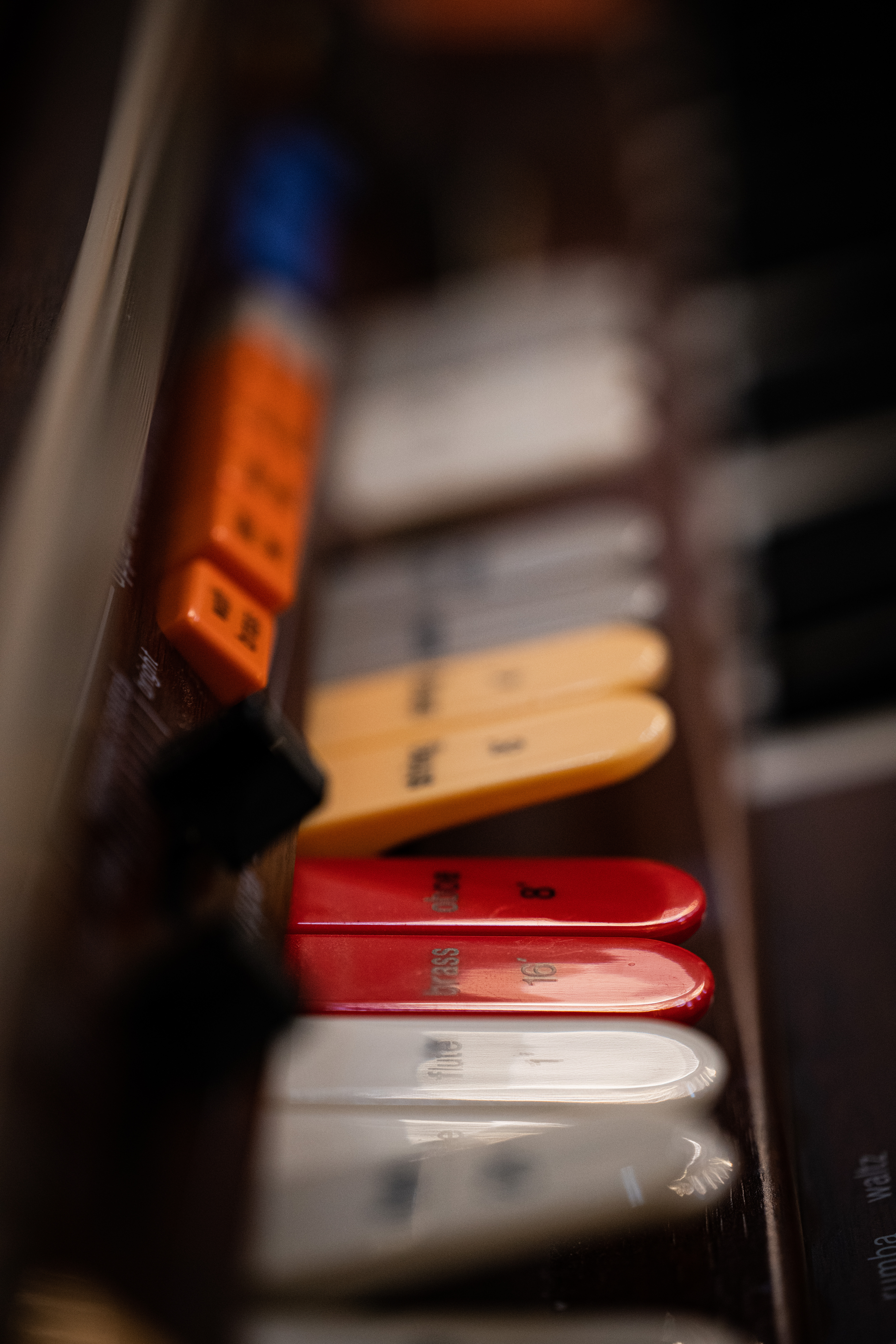Future nostalgia
Words: Tyson Hopprich and Scot Cotterell, as told to Johnny von Einem
Adelaide musician Tyson Hopprich (aka DJ TR!P) and Tasmanian multidisciplinary artist Scot Cotterell combined their shared fascination for electric organs and decaying technology for an interactive art installation at this year’s Mona Foma festival, titled ‘Organ Donor’.
The partnership also produced an ambient album that features 45 of the obsolescent instruments, gifted or sold to the artists, sounding off in an old abattoir.
The two spoke with CityMag about the sounds and found stories that emerged from their donated organs.
Listen to Organ Donor here.
This article first appeared in CityMag’s 2022 Festival Edition.
Find a copy here.
Tyson: I grew up with an electric organ. On my dad’s side, my oma and opa had one growing up, so as kids we used to play them. We used to pretend they were spaceships and different instruments, and sometimes we’d pick up voices through the speaker. We thought it was ghosts.
Scot: The wood-panelled ‘70s organ was in the rear room of my house. Mum was always a bit of a tinkerer musician. I suspect she salvaged it, because she was the type of person who would fall in love with things like that. I was more interested in the visual look of the thing. The colour scheme, and even just the interface. They have often an effect where they look quite nostalgic but remain somehow futuristic. I was always interested in instruments, not as necessarily a playable thing but as an object with a suggested meaning, or a potential. An old guitar in a cupboard speaks to either misplaced potential or to an initial wish to be virtuosic at something.

Tyson: Also the wish of family bonding, of being around the organ and playing the songs. That’s what we found in the seats of all these stools, all these booklets about family time. A lot of that’s lost, I feel, with tech. It’s wishful thinking, that instrument, isn’t it?
Scot: There were two books that were aesthetically quite interesting. One was one of the user guides that came with the Yamaha Electone, and that has this image of family gathered around, with the dad who’s playing. And then another one that spoke, funnily, I guess, to a kind of Spotify culture, which was called 1001 Hits. The concept of a book with 1001 songs in it would have been amazing at that time.
Tyson: The album [came from] our experience with the organs during our development week. We did a lot of recordings while we were in an old abattoir. Some songs are based on elements of the samples of the organs, or themes we discussed, the energy around the organs – some were from people who’d passed.
Scot: We both have a bit of a hardware hacking background, in that we’ve both built interfaces and circuit-bent things and pulled things apart, so that was a difficult urge to curtail, in a way. To not pull these things apart.
Tyson: And these things are quite analogue, even though they’re digital. But they just misbehave, because they’re old. If you knock them, the reverb is an actual reverb box. Some of them we had to kick to make them work.
Scot: We both like controlling systems; this is a bit of an uncontrollable system.
Tyson: And they can go really loud, as well. We had to do everything at minimum volume, and it filled that abattoir. But walking through, it’s quite meditative, isn’t it? It’s almost binaural beats, where it starts tricking your brain. It is overwhelming, the warmth and the frequencies. They surround you.

Above, clockwise from top left:
Some organs had long been abandoned; Before there was Spotify, there were songbooks; Some organs came from loving homes; At Tyson and Scot’s Mona Foma Organ Donor installation, the public was invited to play the instruments; Gothic energy; Ghosts (or genies) in the machine; Keeping a record of the ambience at Hobart Town Hall; An orchestra of incidental collaboration.
Image credits
Lead image: Milson Barnard
Above, clockwise from top left:
Mona Foma
DJ TR!P
Mona Foma
DJ TR!P
Scot Cotterell
Kat Traill
Milson Barnard
DJ TR!P
